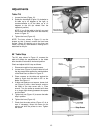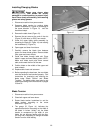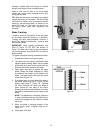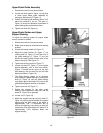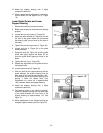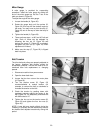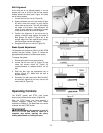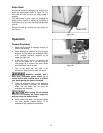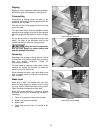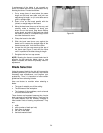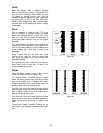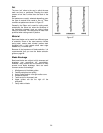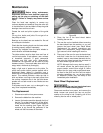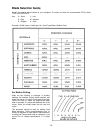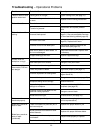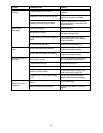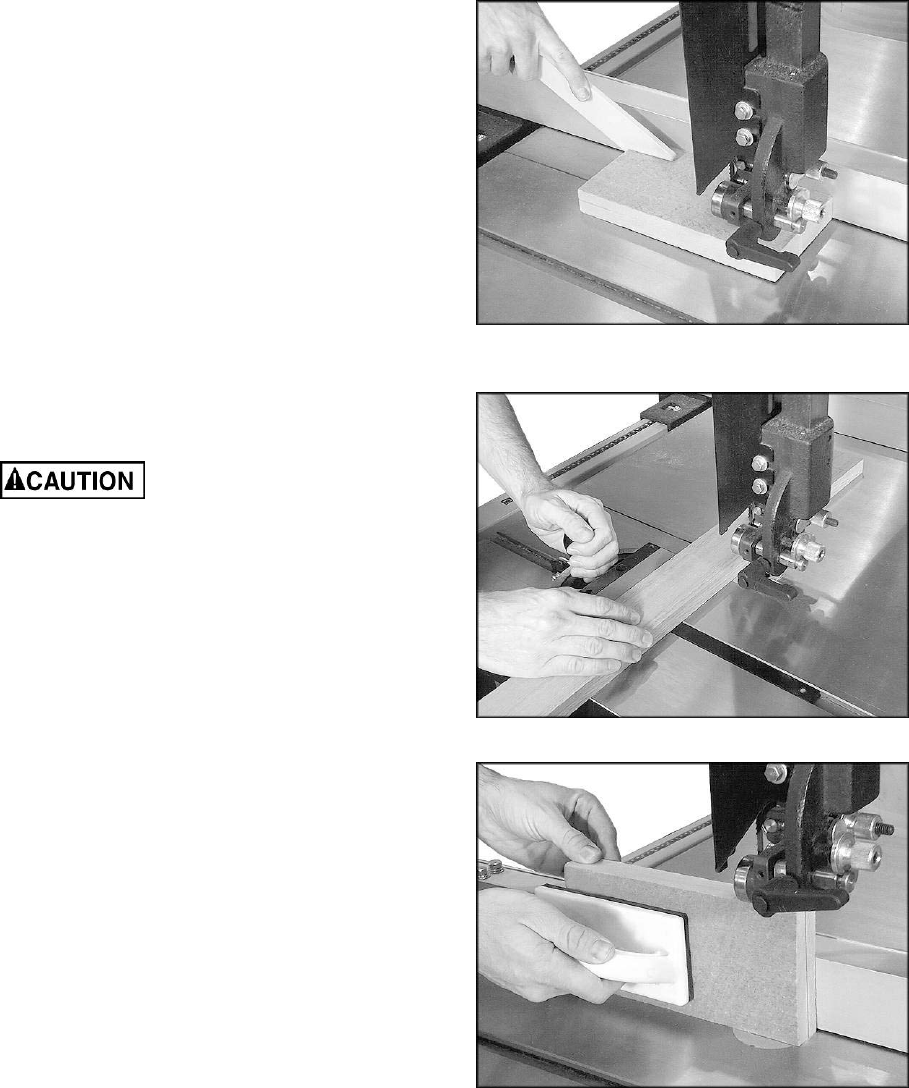
23
Ripping
Ripping is cutting lengthwise down the workpiece,
and with the grain (of wood stock). See Figure 31.
Crosscutting
Crosscutting is cutting across the grain of the
workpiece, while using the miter gauge to feed the
workpiece into the blade.
Slide the bar of the miter gauge into the end of the
slot on the table.
The right hand should hold the workpiece steady
against the miter gauge, while the left hand pushes
the miter gauge past the blade, as shown in Figure
32.
Do not use the fence in conjunction with the miter
gauge. The offcut of the workpiece must not be
constrained during or after the cutting process.
Using the fence in conjunction
with the miter gauge can cause binding and
possible damage to the blade.
Resawing
Resawing is the process of slicing stock to reduce
its thickness, or to produce boards that are thinner
than the original workpiece. Figure 33
demonstrates resawing.
The ideal blade for resawing is the widest one the
machine can handle, as the wider the blade the
better it can hold a straight line.
When resawing thin stock, use a push block, push
stick, or similar device to keep your hands away
from the blade.
Blade Lead
Blade drift, or “lead,” is a problem that may occur
when the blade begins to wander off the cutting
line even when the band saw fence is being used.
Figure 34 shows an example of blade lead.
Blade lead can be caused by a number of factors,
and these should all be checked and corrected if
necessary:
• Fence is not parallel to miter slot and blade.
• Blade is not tensioned correctly.
• Blade is dull.
• Teeth have too much “set” on one side of the
blade.
Figure 31
(push stick not included)
Figure 32
Figure 33
(push block not included)



